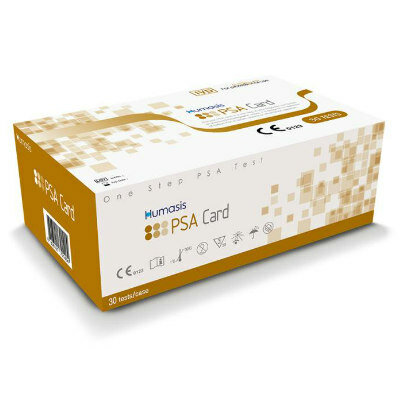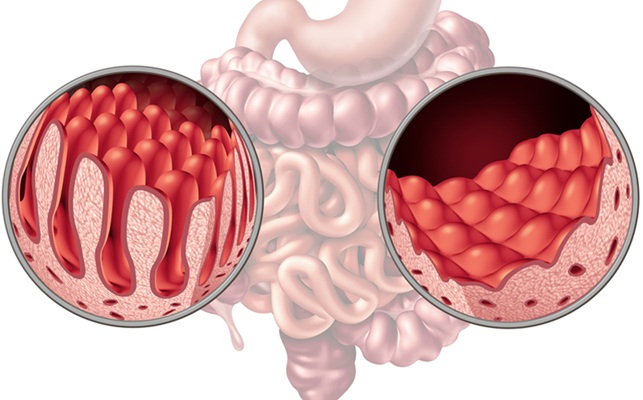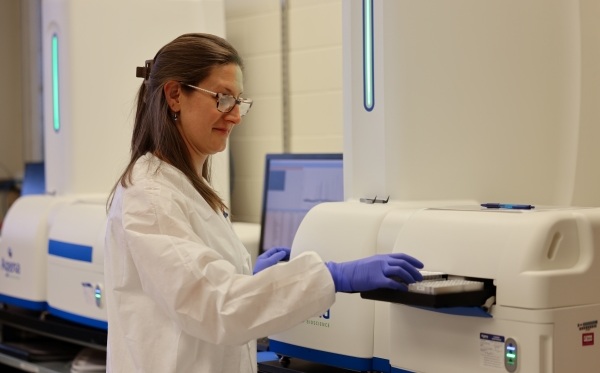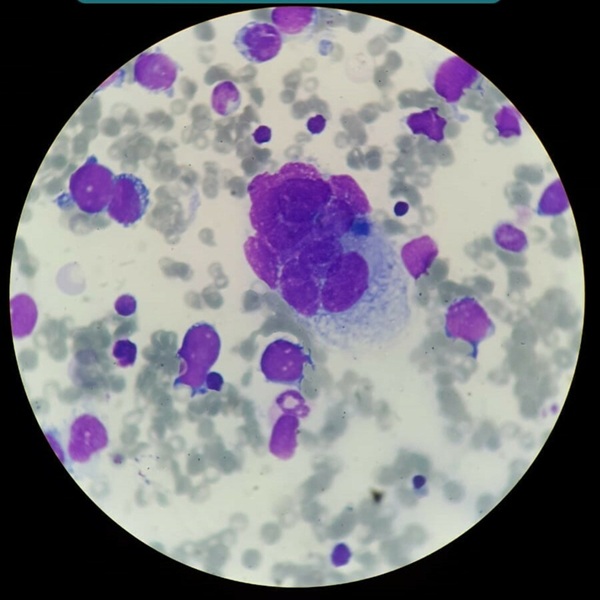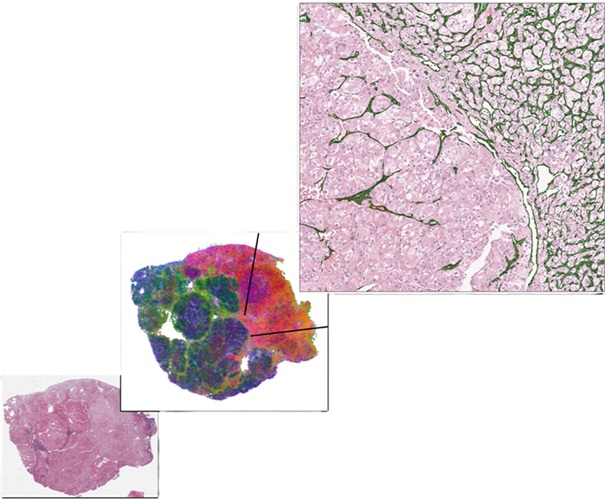Anti-Treponema Immunohistochemistry Cross-Reactivity Reported with Non-Treponema Spirochetes
|
By LabMedica International staff writers Posted on 12 Oct 2016 |
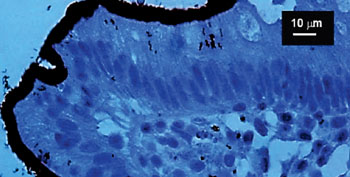
Image: Immunohistochemical detection of human intestinal spirochetosis with signs of invasion (Photo courtesy of the US National Institute of Health).
Syphilis has different histopathologic presentations, and it can mimic a significant number of entities while human intestinal spirochetosis is characterized by the presence of a layer of spirochetes adherent to the apical epithelial surface of the colorectal mucosa.
The spirochete species most often associated with this finding in humans are Brachyspira pilosicoli and Brachyspira aalborgi. B.pilosicoli has been identified in other animals, such as pigs, rodents, and chickens, suggesting that the acquisition can be zoonotic. Higher prevalence rates are reported in developing countries, homosexual men, and human immunodeficient virus (HIV)-positive patients, who are also at increased risk for syphilis.
Medical scientists at the Cleveland Clinic (Cleveland, OH, USA) investigated the histopathologic findings of intestinal spirochetosis, which are different from those of syphilis. They used biopsies from eight patients with intestinal spirochetosis to evaluate the potential of cross-reactivity of a commercially available polyclonal antibody directed against Treponema pallidum, the causative agent of syphilis.
Hematoxylin-eosin stains and Warthin-Starry stains were available in all cases. The slides were reviewed and the diagnoses confirmed. In all biopsies, the hematoxylin-eosin–stained sections revealed a thickened and shaggy basophilic band on the apical cell membrane of the colorectal epithelium; Warthin-Starry stain demonstrated numerous spirochetes. Immunohistochemistry for T. pallidum (Biocare Medical, Concord, CA, USA) was performed on 2-μm sections of paraffin-embedded tissues, and the tissues were incubated 16 minutes at 37 °C. The protein-antibody complexes were located with the iView DAB Detection kit (Ventana Medical Systems, Oro Valley, AZ, USA). All biopsies showed strong positivity for the polyclonal antibody for T. pallidum.
The authors concluded that the potential for cross-reactivity of commercially available antibodies for T. pallidum with other spirochete species poses a potential diagnostic pitfall when biopsies are taken from locations wherein spirochetes may be encountered. The anti–T pallidum immunohistochemical stain remains a significant advance in the detection of T. pallidum spirochetes in the biopsies of patients with syphilis. It is important for the pathologist to be aware of this cross-reactivity with non-Treponema spirochetes. The histopathologic diagnosis of syphilis should not rest entirely on a positively staining spirochete. Rather, the diagnosis should be made based on the presence of the spirochetes with the appropriate histopathologic findings. The study was published in the October 2016 issue of the journal Archives of Pathology & Laboratory Medicine.
Related Links:
Cleveland Clinic
Biocare Medical
Ventana Medical Systems
The spirochete species most often associated with this finding in humans are Brachyspira pilosicoli and Brachyspira aalborgi. B.pilosicoli has been identified in other animals, such as pigs, rodents, and chickens, suggesting that the acquisition can be zoonotic. Higher prevalence rates are reported in developing countries, homosexual men, and human immunodeficient virus (HIV)-positive patients, who are also at increased risk for syphilis.
Medical scientists at the Cleveland Clinic (Cleveland, OH, USA) investigated the histopathologic findings of intestinal spirochetosis, which are different from those of syphilis. They used biopsies from eight patients with intestinal spirochetosis to evaluate the potential of cross-reactivity of a commercially available polyclonal antibody directed against Treponema pallidum, the causative agent of syphilis.
Hematoxylin-eosin stains and Warthin-Starry stains were available in all cases. The slides were reviewed and the diagnoses confirmed. In all biopsies, the hematoxylin-eosin–stained sections revealed a thickened and shaggy basophilic band on the apical cell membrane of the colorectal epithelium; Warthin-Starry stain demonstrated numerous spirochetes. Immunohistochemistry for T. pallidum (Biocare Medical, Concord, CA, USA) was performed on 2-μm sections of paraffin-embedded tissues, and the tissues were incubated 16 minutes at 37 °C. The protein-antibody complexes were located with the iView DAB Detection kit (Ventana Medical Systems, Oro Valley, AZ, USA). All biopsies showed strong positivity for the polyclonal antibody for T. pallidum.
The authors concluded that the potential for cross-reactivity of commercially available antibodies for T. pallidum with other spirochete species poses a potential diagnostic pitfall when biopsies are taken from locations wherein spirochetes may be encountered. The anti–T pallidum immunohistochemical stain remains a significant advance in the detection of T. pallidum spirochetes in the biopsies of patients with syphilis. It is important for the pathologist to be aware of this cross-reactivity with non-Treponema spirochetes. The histopathologic diagnosis of syphilis should not rest entirely on a positively staining spirochete. Rather, the diagnosis should be made based on the presence of the spirochetes with the appropriate histopathologic findings. The study was published in the October 2016 issue of the journal Archives of Pathology & Laboratory Medicine.
Related Links:
Cleveland Clinic
Biocare Medical
Ventana Medical Systems
Latest Microbiology News
- New Blood Test Detects Up to Five Infectious Diseases at POC
- Molecular Stool Test Shows Potential for Diagnosing TB in Adults with HIV
- New Test Diagnoses Bacterial Meningitis Quickly and Accurately
- Handheld Device Delivers Low-Cost TB Results in Less Than One Hour
- New AI-Based Method Improves Diagnosis of Drug-Resistant Infections
- Breakthrough Diagnostic Technology Identifies Bacterial Infections with Almost 100% Accuracy within Three Hours
- Innovative ID/AST System to Help Diagnose Infectious Diseases and Combat AMR
- Gastrointestinal Panel Delivers Rapid Detection of Five Common Bacterial Pathogens for Outpatient Use
- Rapid PCR Testing in ICU Improves Antibiotic Stewardship
- Unique Genetic Signature Predicts Drug Resistance in Bacteria
- Unique Barcoding System Tracks Pneumonia-Causing Bacteria as They Infect Blood Stream
- Rapid Sepsis Diagnostic Test Demonstrates Improved Patient Care and Cost Savings in Hospital Application
- Rapid Diagnostic System to Detect Neonatal Sepsis Within Hours
- Novel Test to Diagnose Bacterial Pneumonia Directly from Whole Blood
- Interferon-γ Release Assay Effective in Patients with COPD Complicated with Pulmonary Tuberculosis
- New Point of Care Tests to Help Reduce Overuse of Antibiotics
Channels
Clinical Chemistry
view channel
AI-Powered Blood Test Accurately Detects Ovarian Cancer
Ovarian cancer ranks as the fifth leading cause of cancer-related deaths in women, largely due to late-stage diagnoses. Although over 90% of women exhibit symptoms in Stage I, only 20% are diagnosed in... Read more
Automated Decentralized cfDNA NGS Assay Identifies Alterations in Advanced Solid Tumors
Current circulating cell-free DNA (cfDNA) assays are typically centralized, requiring specialized handling and transportation of samples. Introducing a flexible, decentralized sequencing system at the... Read more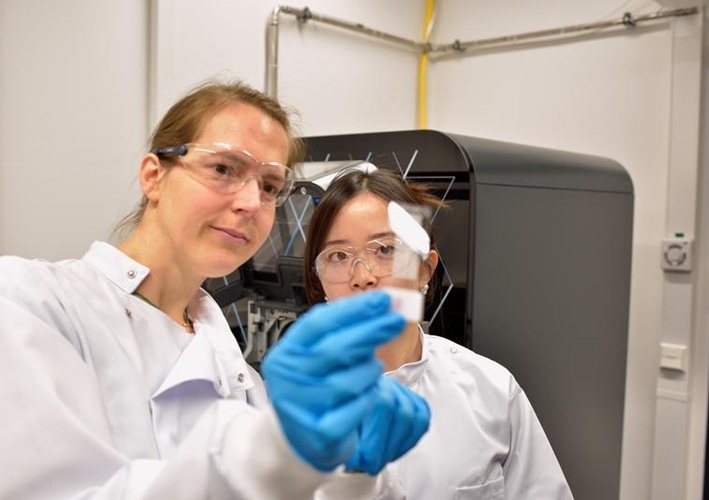
Mass Spectrometry Detects Bacteria Without Time-Consuming Isolation and Multiplication
Speed and accuracy are essential when diagnosing diseases. Traditionally, diagnosing bacterial infections involves the labor-intensive process of isolating pathogens and cultivating bacterial cultures,... Read more
First Comprehensive Syphilis Test to Definitively Diagnose Active Infection In 10 Minutes
In the United States, syphilis cases have surged by nearly 80% from 2018 to 2023, with 209,253 cases recorded in the most recent year of data. Syphilis, which can be transmitted sexually or from mother... Read moreMolecular Diagnostics
view channel
POC Oral Swab Test to Increase Chances of Pregnancy in IVF
Approximately 15% of couples of reproductive age experience involuntary childlessness. A significant reason for this is the growing trend of delaying family planning, a global shift that is expected to... Read more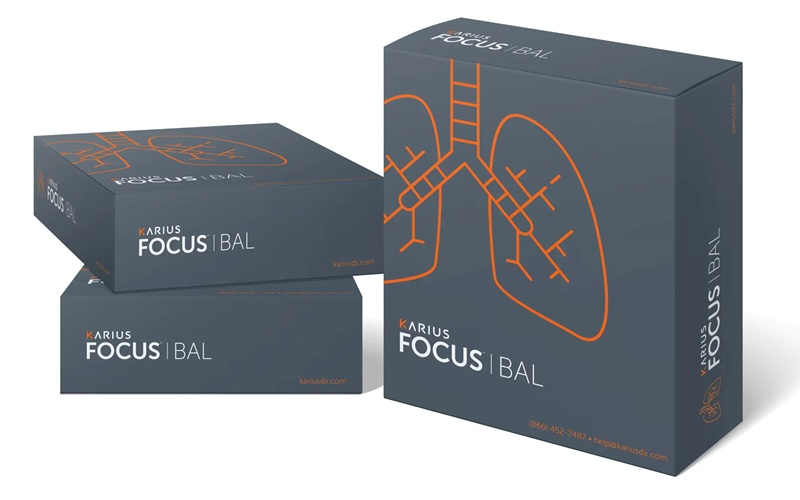
Microbial Cell-Free DNA Test Accurately Identifies Pathogens Causing Pneumonia and Other Lung Infections
Bronchoalveolar lavage (BAL) is a commonly used procedure for diagnosing lung infections, especially in immunocompromised patients. However, standard tests often fail to pinpoint the exact pathogen, leading... Read moreHematology
view channel
First Point-of-Care Heparin Monitoring Test Provides Results in Under 15 Minutes
Heparin dosing requires careful management to avoid both bleeding and clotting complications. In high-risk situations like extracorporeal membrane oxygenation (ECMO), mortality rates can reach about 50%,... Read more
New Scoring System Predicts Risk of Developing Cancer from Common Blood Disorder
Clonal cytopenia of undetermined significance (CCUS) is a blood disorder commonly found in older adults, characterized by mutations in blood cells and a low blood count, but without any obvious cause or... Read moreImmunology
view channel
Stem Cell Test Predicts Treatment Outcome for Patients with Platinum-Resistant Ovarian Cancer
Epithelial ovarian cancer frequently responds to chemotherapy initially, but eventually, the tumor develops resistance to the therapy, leading to regrowth. This resistance is partially due to the activation... Read more
Machine Learning-Enabled Blood Test Predicts Immunotherapy Response in Lymphoma Patients
Chimeric antigen receptor (CAR) T-cell therapy has emerged as one of the most promising recent developments in the treatment of blood cancers. However, over half of non-Hodgkin lymphoma (NHL) patients... Read morePathology
view channel
Groundbreaking Chest Pain Triage Algorithm to Transform Cardiac Care
Cardiovascular disease is responsible for a third of all deaths worldwide, and chest pain is the second most common reason for emergency department (ED) visits. With EDs often being some of the busiest... Read more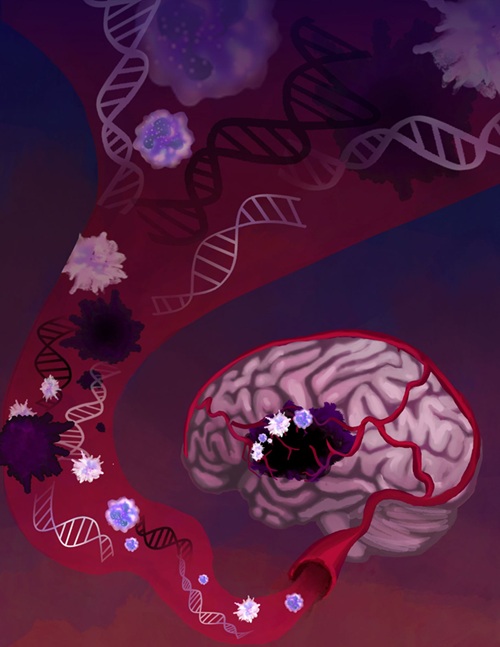
AI-Based Liquid Biopsy Approach to Revolutionize Brain Cancer Detection
Detecting brain cancers remains extremely challenging, with many patients only receiving a diagnosis at later stages after symptoms like headaches, seizures, or cognitive issues appear. Late-stage diagnoses... Read moreTechnology
view channel
Advanced Predictive Algorithms Identify Patients Having Undiagnosed Cancer
Two newly developed advanced predictive algorithms leverage a person’s health conditions and basic blood test results to accurately predict the likelihood of having an undiagnosed cancer, including ch... Read more
Light Signature Algorithm to Enable Faster and More Precise Medical Diagnoses
Every material or molecule interacts with light in a unique way, creating a distinct pattern, much like a fingerprint. Optical spectroscopy, which involves shining a laser on a material and observing how... Read more
Disposable Microchip Technology Could Selectively Detect HIV in Whole Blood Samples
As of the end of 2023, approximately 40 million people globally were living with HIV, and around 630,000 individuals died from AIDS-related illnesses that same year. Despite a substantial decline in deaths... Read more
Pain-On-A-Chip Microfluidic Device Determines Types of Chronic Pain from Blood Samples
Chronic pain is a widespread condition that remains difficult to manage, and existing clinical methods for its treatment rely largely on self-reporting, which can be subjective and especially problematic... Read moreIndustry
view channel
Qiagen Acquires NGS Analysis Software Company Genoox
QIAGEN (Venlo, the Netherlands) has signed a definitive agreement to acquire Genoox (Tel Aviv, Israel), a provider of artificial intelligence (AI)-powered software that enables clinical labs to scale and... Read more
Cepheid and Oxford Nanopore Technologies Partner on Advancing Automated Sequencing-Based Solutions
Cepheid (Sunnyvale, CA, USA), a leading molecular diagnostics company, and Oxford Nanopore Technologies (Oxford, UK), the company behind a new generation of sequencing-based molecular analysis technologies,... Read more
Grifols and Tecan’s IBL Collaborate on Advanced Biomarker Panels
Grifols (Barcelona, Spain), one of the world’s leading producers of plasma-derived medicines and innovative diagnostic solutions, is expanding its offer in clinical diagnostics through a strategic partnership... Read more







